Butternut Squash Soup is the perfect meal to make for a winter's day. And if you have leftover roasted Butternut Squash, it makes the perfect ingredient for this soup. If you are walking through your supermarket and you notice that there is an abundance of squash, it’s probably fall, The best time to make Butternut Squash Soup.
But, you take one look at the squash, and you think what would I do with it? How does it taste? How do you cook butternut squash? And what’s the difference between all the different types of squash.
Well, in this post I break down the difference between three of the most common squash and give you ideas of what you can do with them.
In addition, I’ll share with you a healthy roasted butternut squash soup recipe, that’s not only easy to make but Whole30 and Paleo compatible.
Finding things to eat on a Whole30 diet can be challenging especially when you’re trying to make delicious tasting food for you and your family. If you are currently on the program you often endeavor to find recipes that can be made ahead and eaten during the week. That’s what makes this roasted butternut squash soup recipe ideal for Sunday prep work.
If you are on a round of Whole30 and need support, join us here for a Facebook group that's gentle but supportive.
For those of you who don’t know what Whole30 is and want to learn more, visit the official Whole30 site at this link: www.whole30.com.
Whether your on the program or not, this Roasted Butternut Squash soup recipe tastes absolutely delicious and is a great hearty option for the colder weather.
Jump to:
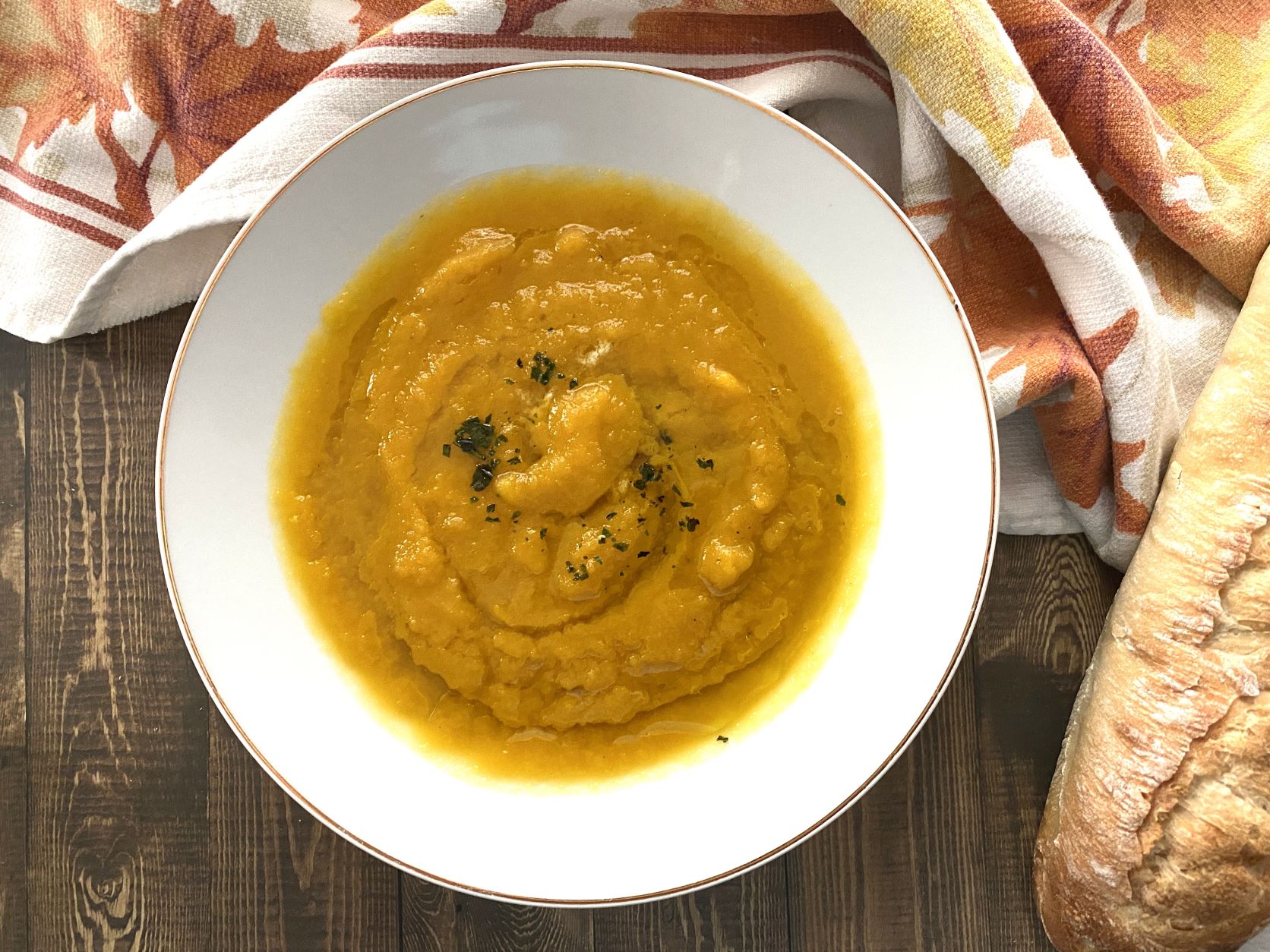
three common types of squash
There are several types of squash. Often squash is used to make Gluten Free Vegan dishes which are very popular and healthy.
Today, I'm going to talk about three of the most popular squash vegetables and how to cook squash.
spaghetti squash
Most squash are either green or yellow on the outside and have a hard shell. That’s no exception here. Spaghetti squash is yellow on the outside and yellow on the inside. Once you slice it in half, you’ll find a bunch of seeds with what looks like overgrown stringy fibres. You’ll want to scoop this out, before you do anything with it. Spaghetti squash has a neutral taste.
Spaghetti squash got it’s name because of it’s appearance after it has been cooked. That’s because once cooked, you can literally take a fork and when you break the meaty inside apart it resembles course spaghetti. People often use spaghetti squash as a substitute for spaghetti pasta. This recipe for Spaghetti Squash and Meatballs is a prime example of how Whole30iers substitute spaghetti with spaghetti squash.
acorn squash
The acorn squash is green on the outside and an orange colour on the inside. Acorn squash is also referred to as pepper squash for a good reason. You would prepare acorn squash like any other squash by scooping out the seeds and any overgrown fibres inside. Acorn squash has a neutral taste with a “peppery” flavour. Acorn squash is often use as a vessel for stuffing mixtures.
butternut squash
Butternut squash is yellow on the outside and usually a bright orange colour on the inside. You would prepare butternut squash as any other squash by scooping out the seeds inside. Butternut squash is my favourite of all the squashes I make. Butternut squash is also neutral tasting but is known for having a “sweet and nutty” flavour. Butternut squash is often used to make butternut mash or butternut squash soup.
tips and tricks to making butternut squash soup
preparing your squash
All squashes with a hard shell are usually prepared in the same fashion. You’ll need a heavy duty knife. A sharp knife that you would use to carve raw meet would be best. Lay the squash sideways on your counter and take the tip of your knife and wedge the tip of the knife into the squash. Drive the knife down until you have gone through the middle of the squash but not all the way through.
Pull the knife up slightly and pull the knife to the bum of the squash as you attempt to cut the shell going lengthwise and all the way around. Then split the shell by wedging your fingers into the slit that you have made and breaking the squash apart.
Scoop the seeds and overgrown fibres out leaving the meat of the squash. Lay the squash cut side down on a foil lined baking sheet. Place the squash in the oven and add 1 cup of water on the baking sheet. The steam from the water will help to cook the squash. Bake at 350 F for 30 to 60 minutes, depending on size.
Once roasted, peel and cube the squash. You can freeze the cooked, cubed squash if you are not going to use it right away. When your ready to use it, you can thaw it out for 24 hours in the fridge, or if your like me and decide meals at the last minute you can soak the squash in some warm water for about 20 minutes.
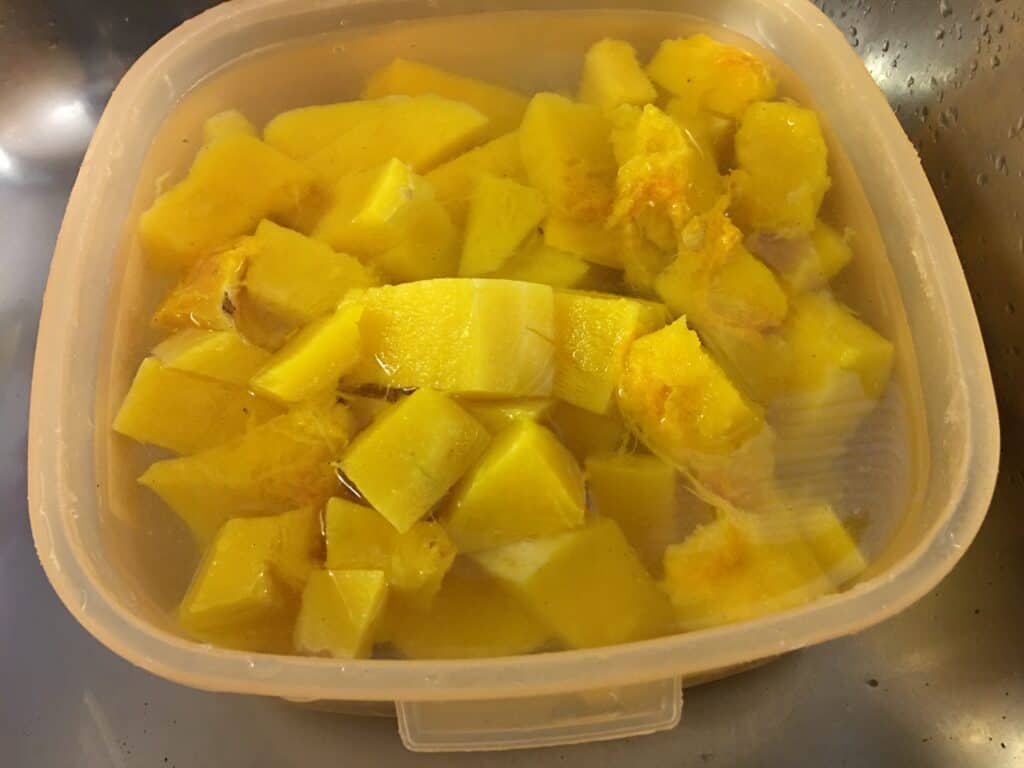
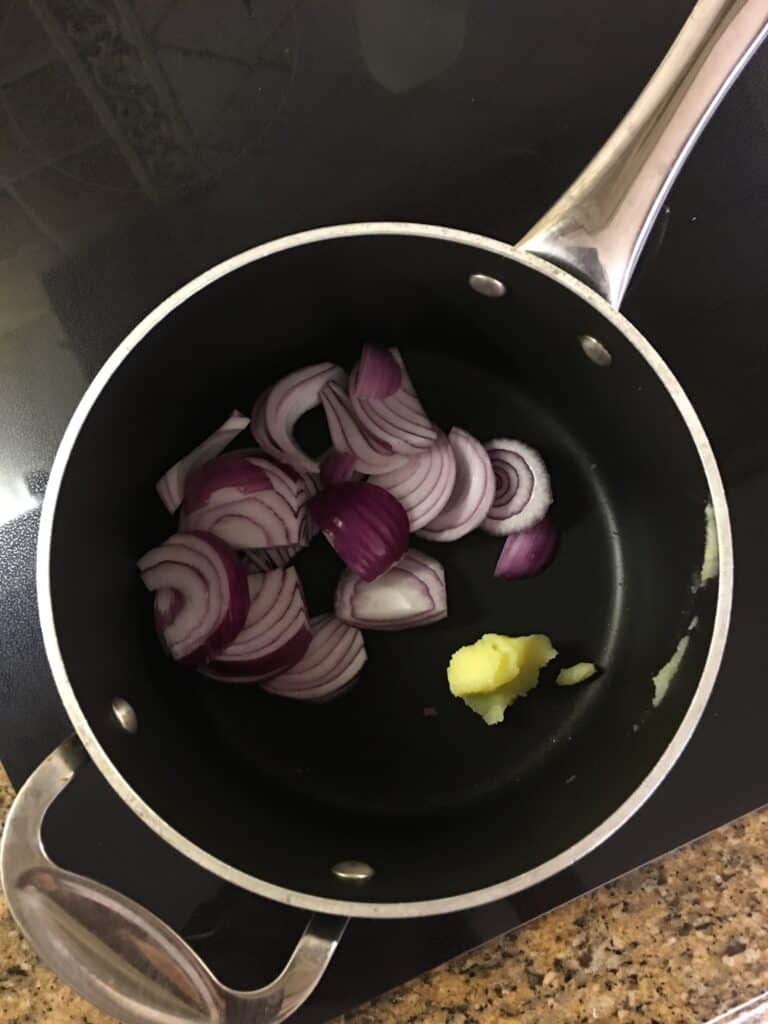
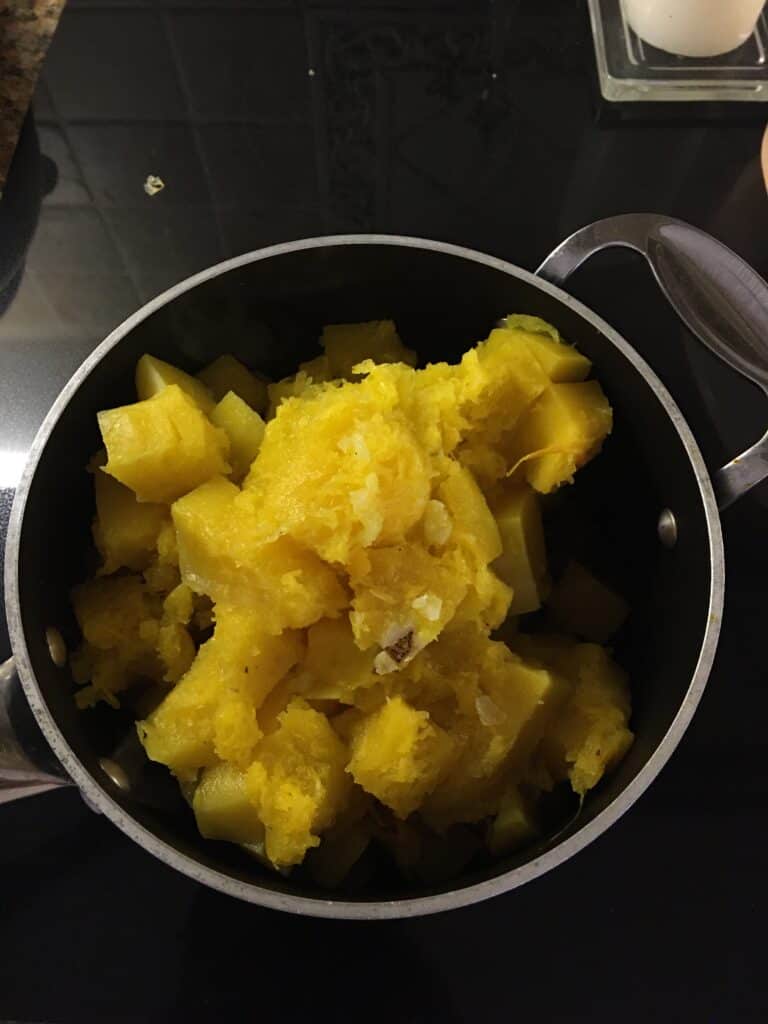
keep it simple when making soup
Don't have time to roast your own squash? No problem, by pre-cooked packaged frozen squash from you local super market to make this butternut squash soup.
And remember, sometimes, the less ingredients you use the better the final product. Like face makeup, sometimes less is more! This recipes uses a few simple ingredients to produce a quick good tasting final product that’s both tasty and healthy.
A hand mixer works best for this butternut squash recipe because you can take it straight to the pot and purée the squash. But, if you don’t have one, no problem. You can either transfer the cooked squash to a food processor, blender, ninja, etc. It will do the same job.
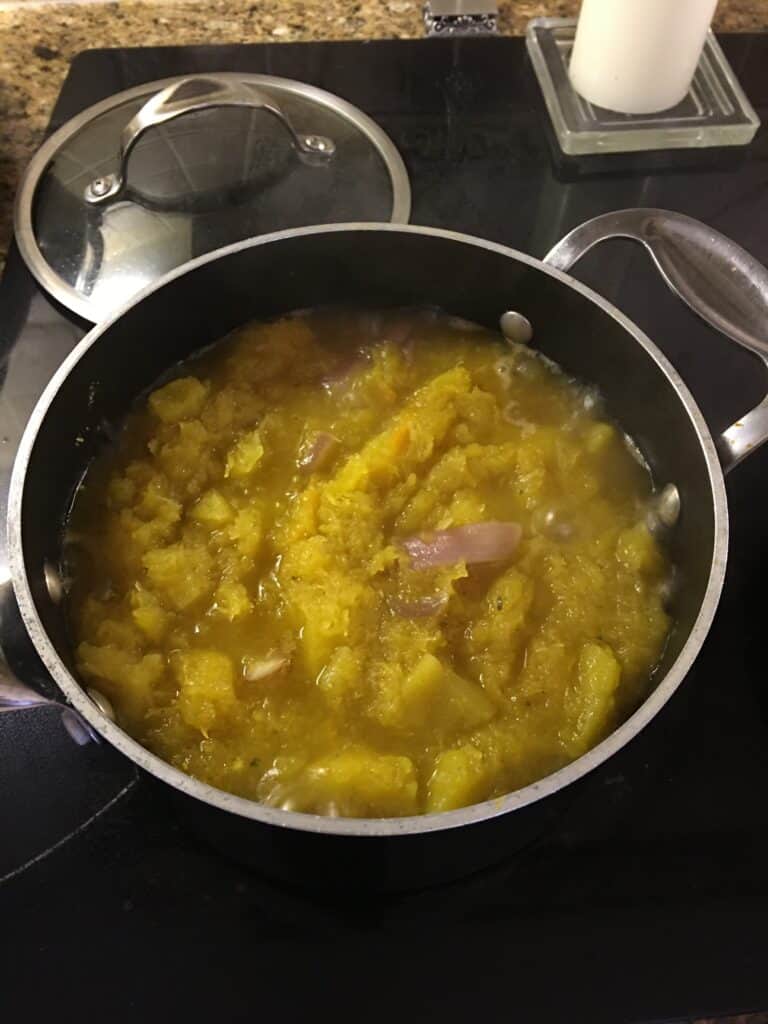
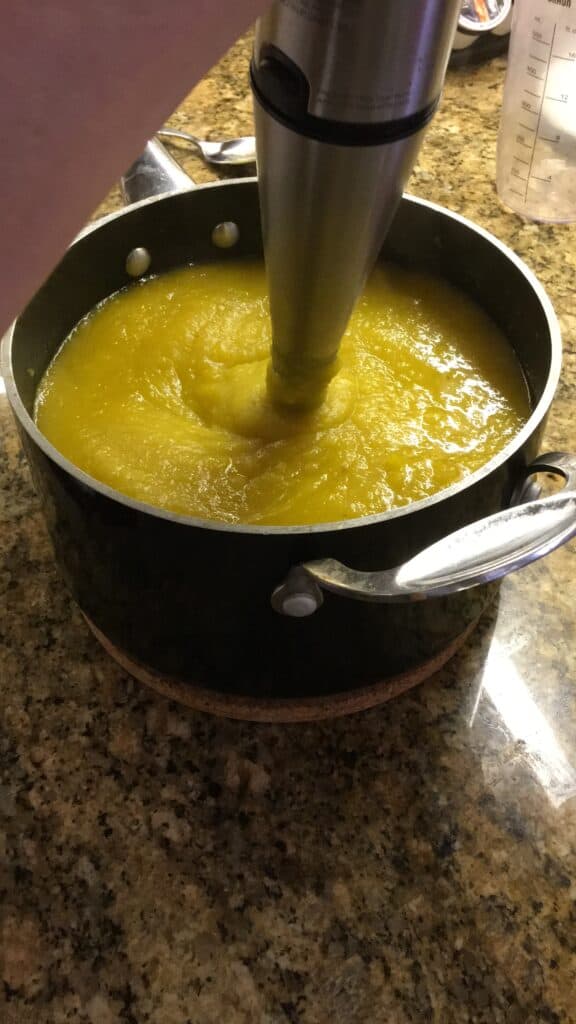
storage
Once made, you can pour the hot contents into glass jars, screw on the lids and as they soup begin to cool down, the contents will vacuum seal. You’ll know that the jars have sell vacuum-sealed when you hear a pop.
You can store this soup in a freezer safe container in the freezer. Leftovers can also be stored in the fridge for 3 to 4 days.
coconut cream
If you are adding coconut cream to your soup, do so when serving the soup in a bowl only. Coconut milk does not reheat well so if you add it to all of the soup prior to serving, it won’t look aesthetically pleasing. If your not on round, you can substitute a dollop of either sour cream or yogurt for the coconut cream.
Storage
Leftovers for this soup store very well in an air-tight container in the fridge for 3 to 4 days.
Food Safety
Note that the storage guidelines provided on this page and site are estimates from personal experiences. We are all adults and as an adult you are responsible to ensure that the food you eat is safe to eat. Since, I'm not a food safety expert, you are responsible to review your local guidelines on food storage prior to storing any food left-overs.
Remember to:
- Not use the same utensils on cooked food, that previously touched raw meat
- Wash hands after touching raw meat
- Don't leave food sitting out at room temperature for extended periods
- Never leave cooking food unattended
- Use oils with high smoking point to avoid harmful compounds
- Always have good ventilation when using a gas stove
For Canadian Guidelines check the Government of Canada Food Safety Guidelines or see more guidelines at USDA.gov.
Looking for other main dishes to make? Click here to go back to the home page and window shop.
Make this recipe for Butternut Squash Soup now or PIN it for later!
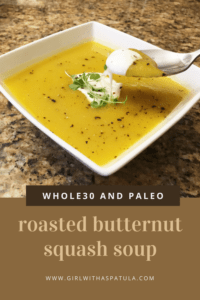
Recipe Details
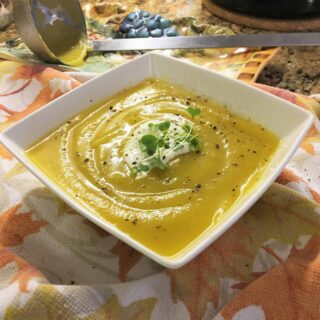
Butternut Squash Soup
Ingredients
- 6 cups Butternut Squash cooked cubed ( or 2 x 500g bags of frozen cubed pre-cooked squash)
- 1 medium onion cut into quarters
- 1 tbsp ghee or olive oil
- 3 cups vegetable stock
- 1 tbsp salt
- ½ cups coconut cream optional
- 2 tbsp vegetable seasoning optional
- Pepper to taste
Instructions
- If you are using pre-cooked squash, skip this step. Preheat oven to 350°F. Cut the squash lengthwise and place faced-down (cut side down) on a baking tray lined with foil and place on the lower rack of the oven. Place one cup of water around the squash on the baking tray. Bake for 45 to 60 minutes or when a fork inserted into the squash comes out easily. Let squash cool completely. Peel, cut and cube the squash.
- In a large pot, sauté the sliced onion in ghee until softened.
- Add the butternut squash, vegetable stock and salt and bring to a boil. Let simmer for about 20 minutes.
- Cook until you can easily break apart the squash pieces with a wooden spatula.
- Remove from heat and using a hand mixer and very carefully puree the squash-onion mixture to the consistency that you want. If you don't have a hand blender, you can transfer the contents of the pot into a food processor. Be careful as the contents are very hot. You can also wait for the contents to cool down.
- If the soup seems to thick, add more vegetable broth. Season to taste with additional salt or vegetable seasoning. Warm up to desired temperature.
- Optional - Serve in soup bowls with a dollop of coconut cream and cracked pepper.
Notes
Nutrition
More Whole30 Recipes
Find great inspiration with these Whole30 recipes.


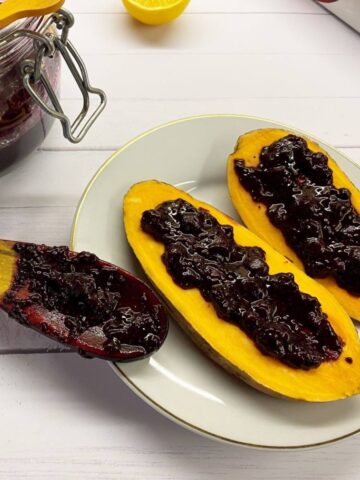
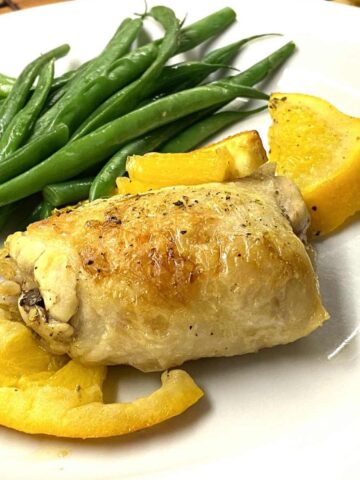
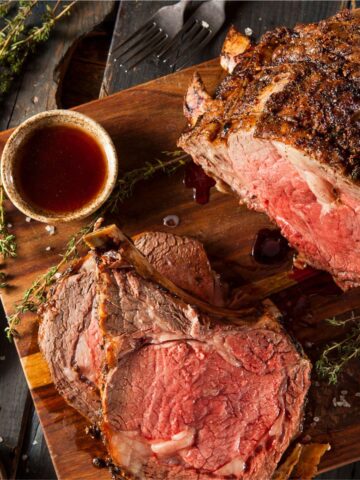

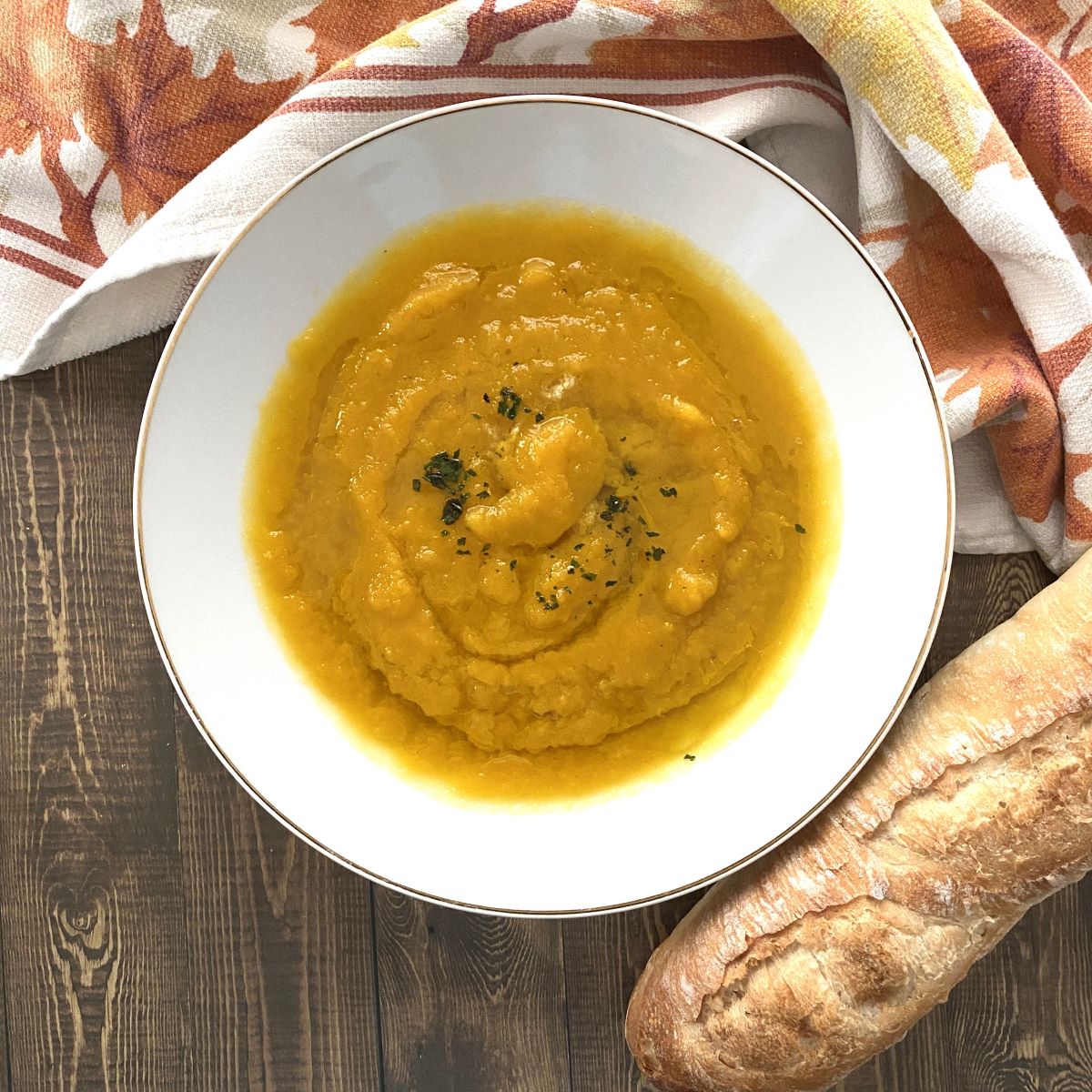
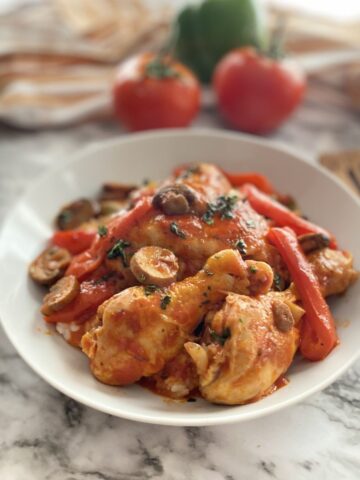
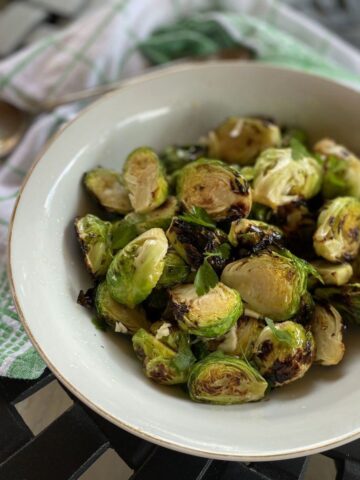


Comments
No Comments